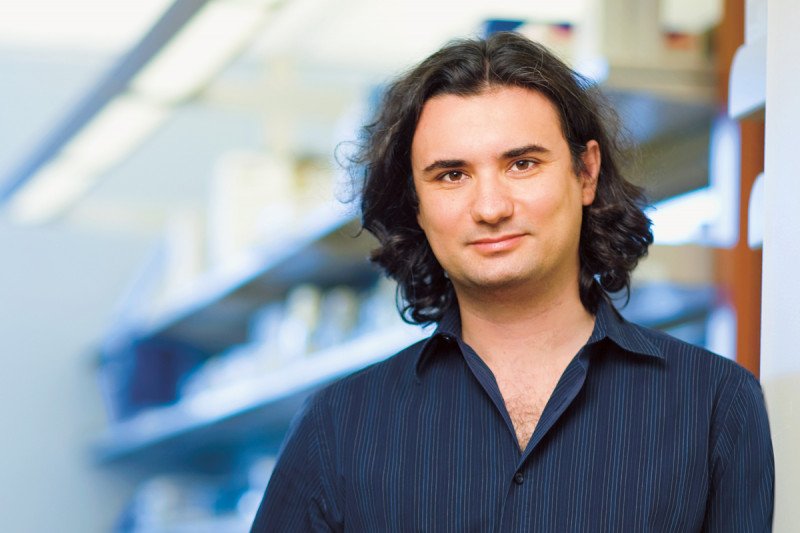
Cancer biologist Andrea Ventura
In many types of cancer, tumor cells undergo chromosomal rearrangements — complex genetic mutations in which stretches of DNA are reshuffled. Until now, this process has been difficult to reconstruct in lab mice, so scientists haven’t always been able to find out which chromosomal rearrangements are clinically important or how they enable tumors to thrive.
Now a Memorial Sloan Kettering research team has recreated a chromosomal rearrangement in mice. The scientists developed a strategy based on a genome-editing tool called CRISPR to replicate in mice a subtype of non-small cell lung cancer (NSCLC) caused by a chromosomal rearrangement.
“For the first time we are able to model this type of genetic lesion in mice, and this offers great opportunities to study how tumors driven by chromosomal rearrangements develop and to help us identify their Achilles’ heel,” says Andrea Ventura, a cancer biologist who led the study, published in Nature in October.
Jumbled DNA Repair
Rearrangements of chromosomes — packets of DNA found inside the nucleus of a cell — occur when a cell’s DNA is damaged in such a way that the chromosomes break into pieces. Cells are usually able to repair such damage by “gluing” the chromosome pieces back together, but sometimes, mistakes happen that can lead to cancer.
For example, if a cell reassembles the pieces of a shattered chromosome the wrong way, two normally harmless genes can fuse together and create an oncogene — a gene that helps cancer cells grow. In the study, the researchers focused on an oncogene called Eml4–Alk, which is found in about 5 percent of people with NSCLC and results from a mutation in which a piece of a chromosome is inverted.
Patients whose tumors express Eml4–Alk often respond to a drug called crizotinib, which inhibits the function of the protein produced by the oncogene. “The drug can be effective initially, but many patients who respond well eventually develop tumors that are resistant to the therapy,” Dr. Ventura notes.
CRISPR Gene Editing
To generate mice that closely mimic this cancer type, the researchers developed new a way to induce specific chromosomal rearrangements in living organisms. Their approach takes advantage of the CRISPR technology (which stands for Clustered Regularly Interspaced Short Palindromic Repeat and is pronounced “crisper”), which can cut and manipulate a cell’s DNA with high precision.
CRISPR was originally discovered by researchers who were studying how bacteria defend themselves from invaders such as viruses. Scientists have only recently begun to use it to replicate cancer mutations in lab animals.
The CRISPR method of modeling chromosomal rearrangements is very effective compared with existing strategies, which require genetic mouse engineering and breeding. It involves packaging a bacterial enzyme called Cas9 and two small RNA molecules into a viral vector — a virus that can be used to transfer molecules into a cell — and infecting mice with the virus. The Cas9 enzyme is then guided by the RNA molecules to cut particular sites of DNA, recreating the breaks that occur on their own in cancer cells.
A Faithful Replica of Human Tumors
In four to eight weeks, all mice in the study infected with the virus developed lung tumors that closely resembled the human NSCLC cancers. All these mouse tumors, as are the tumors of patients, were composed of cells that had the chromosomal inversion, expressed the Eml4-Alk oncogene, and responded to crizotinib. “This gives us an unprecedented system to investigate how the tumors develop drug resistance,” Dr. Ventura explains. “It will also allow us to screen for more-effective drugs and subject new drugs to more refined preclinical testing.”
In addition, the strategy could be used to model many other chromosomal rearrangements detected in human tumors and explore their biological and clinical significance. “Hundreds of chromosomal rearrangements are known to occur in many types of cancer,” Dr. Ventura says, “but modeling them used to be extremely laborious. Now we have a way of doing it very quickly and inexpensively.”


